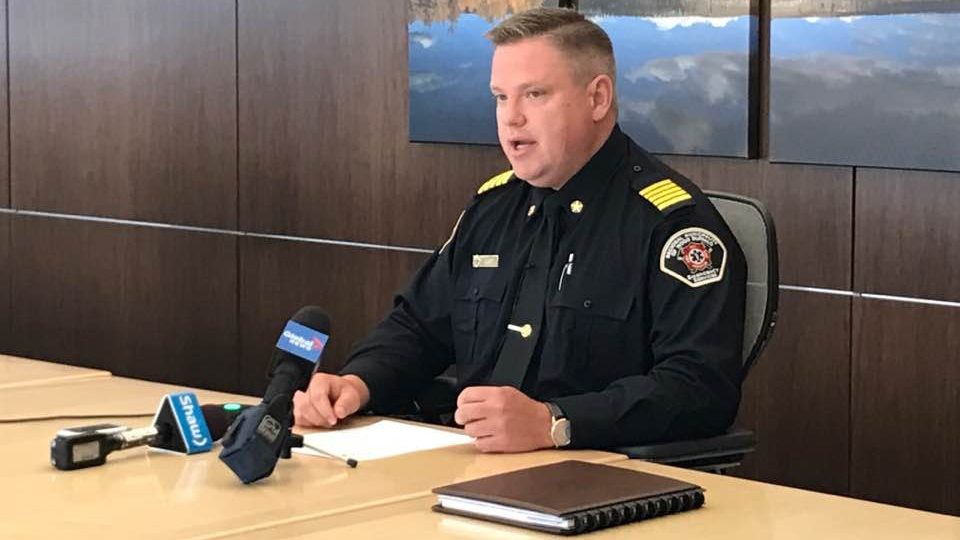Members of Wood Buffalo’s local emergency services spoke at RMWB Council.
They addressed last month’s decision by the province to remove emergency medical dispatch services from Wood Buffalo.
RELATED: Alberta mayors frustrated, blindsided by emergency dispatch services consolidation
Regional Emergency Services Fire Chief Jody Butz spoke of RES opposition to the move to reduce the number of call centres in Alberta from six to two.
“Alberta Health Services announced its plan to centralize and consolidate the dispatching of EMS within 80 days for the Regional Municipality of Wood Buffalo, and three other cities including Lethbridge, Red Deer, and Calgary.”
If approved, Alberta Health Services would field all EMS dispatches out of call centres in Edmonton and Peace River.
Local dispatch services
Butz referenced recommendations in a 2019 performance review on cost efficiencies, which said the region will save $660,000 per year.
“What would be described as marginal cost savings will absolutely cost time, and in the chain of survival that means lives.”
The current local system was in place in Wood Buffalo since the 1970s.
RELATED: Proposed consolidation of dispatch services re-emerges at RMWB Council
RELATED: Mayor Scott urges residents to support local dispatch services
Butz provided statistical evidence of the performance of the local dispatch team.
“Our local dispatch team outperforms the province’s primary dispatch centres by 41 per cent, dispatches an ambulance 48 seconds faster 90 per cent of the time, and verify addresses 30 seconds faster. This is a significant amount of time in the chain of survival.”
He said they found efficiencies in the AHS process leveraging the region’s integrated model and having dispatchers in the same room.
Butz said industry and mutual-aid partners like the HERO Foundation are local solutions that meet the needs of a critical life-saving service in the region.
Deputy Fire Chief Kelly Roberts pointed to risks of consolidation such as loss of vital information between EMS and AHS dispatchers.
“This model also creates risks of losing the caller during the transferring process or adds [the] potential for delays as more people into the event.”
She added 80 per cent of calls they receive are from cellular or smartphones, which require quick address verification.

Roberts said AHS contracts its technology out to the local EMS team, which will end on Jan. 31, 2021.
RELATED: Kelly Roberts named first female Deputy Chief by Regional Emergency Services
She said satellite dispatch centres follow AHS guidelines, accredited, and use same medical protocols.
Roberts mentioned a similar example of consolidation in Foothills.
She said the town’s regional emergency services commission lost its local dispatch service to AHS consolidation in 2009.
“In 2019, the commission found that in 42 per cent of their medical first response requests were delayed more than three minutes. This impact can hit the rural and Indigenous communities the hardest as ambulances are stationed inside Fort McMurray, and the medical first responders are supported by the local fire department.”
She added Foothills is actively advocating to regain its local dispatch service.
Rob Van Hecke, union president of the Fort McMurray Fire Fighters Association (IAFF) Local 2494, also spoke on the province’s decision.
He said that consolidation will result in longer wait times.
“Locating the area and dispatching the closest ambulance is easier for our local dispatchers because they live here within the RMWB, and they understand the landmarks being described to them. Troubleshooting addresses waste valuable time [and] dispatchers that handle calls from outside of our region are obviously detrimental to our residents.”
Van Hecke said the savings are irrelevant compared to the lives lost through consolidation.
Chief Butz added the one-size-fits-all approach by AHS does not work for Wood Buffalo.
“This decision does not just impact the governance, administration, and operations of dispatching in our region, it impacts how resources are deployed as a result both in timing and in the amount of resources sent to an emergency scene.”
RMWB Council will continue speaking to this matter on Sept. 14.
Bear Safety Awareness
RMWB Council approved a motion to have administration pursue a BearSmart Community Designation for Wood Buffalo.
The motion carried by a 6 – 2 margin, despite questions from Councillors about awareness, education, and operational budget implications.
No word on the costs associated with the Alberta BearSmart program.
Councillor Jane Stroud made a supplementary motion.
“THAT Administration be directed to review the operations of the Waste Transfer Stations in Conklin and Janvier and bring forward to Council during the 2021 budget meetings a report on whether the stations can be fully operational five days a week during bear season in anticipation of Spring 2021.”
Stroud said there is currently one collection day per week in Conklin of up to four garbage days.
She said bear-proof bins are not an adequate deterrent to mitigating bear encroachment into the hamlet.
Stroud’s motion carried unanimously.
Mayor and Councillors deferred the remainder of the meeting to Sept. 14 due to technical issues.
RELATED: Council to hear motion addressing mandatory masks in RMWB
At that time, they will also look at a draft of a bylaw that would make masking mandatory in public spaces.







